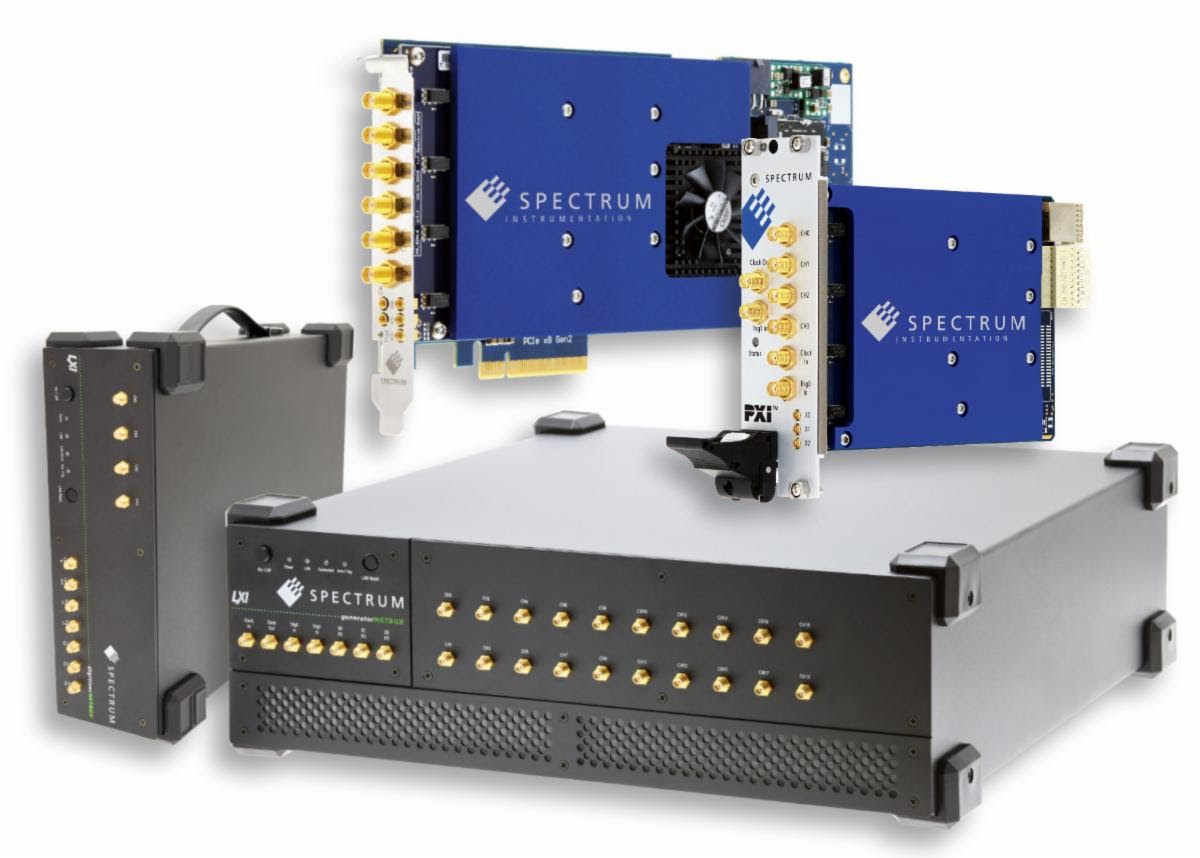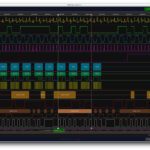 Spectrum Instrumentation has released a new firmware option for its range of versatile 16-bit Arbitrary Waveform Generators (AWGs) with sampling rates up to 1.25 GS/s and bandwidths up to 400 MHz. The new option costs $1200 and allows users to define 23 DDS cores per AWG-card, that can be routed to the hardware output channels. Each DDS core (sine wave) can be programmed for frequency, amplitude, phase, frequency slope, and amplitude slope. This enables, for example, the control of lasers through AODs and AOMs, as often used in quantum experiments, with just a few simple commands – instead of making large data array calculations. The DDS output can be synchronized with external trigger events or by a programmable timer with a resolution of 6.4 ns.
Spectrum Instrumentation has released a new firmware option for its range of versatile 16-bit Arbitrary Waveform Generators (AWGs) with sampling rates up to 1.25 GS/s and bandwidths up to 400 MHz. The new option costs $1200 and allows users to define 23 DDS cores per AWG-card, that can be routed to the hardware output channels. Each DDS core (sine wave) can be programmed for frequency, amplitude, phase, frequency slope, and amplitude slope. This enables, for example, the control of lasers through AODs and AOMs, as often used in quantum experiments, with just a few simple commands – instead of making large data array calculations. The DDS output can be synchronized with external trigger events or by a programmable timer with a resolution of 6.4 ns.
DDS – Direct Digital Synthesis – is a method for generating arbitrary periodic sine waves from a single, fixed-frequency reference clock. It is a technique widely used in a variety of signal-generation applications. The DDS functionality implemented on Spectrum Instrumentation’s AWGs is based on the principle of adding multiple ‘DDS cores’ to generate a multi-carrier (multi-tone) signal with each carrier having its well-defined frequency, amplitude, and phase.
With the ability to switch between the normal AWG mode (which generates waveforms out of pre-programmed data) and the DDS mode (which needs only a few commands to generate sine wave carriers), the Spectrum AWGs are highly versatile and can be adapted to almost any application. In DDS mode, the AWG acts as a base for the multi-tone DDS. The unit’s built-in 4 GByte of memory and fast DMA transfer mode then allow the streaming of DDS commands at a rate as high as 10 million commands per second! This unique capability provides the flexibility to perform user-defined slopes (e.g. s-shaped) as well as various modulation types (e.g. FM and AM) with simple, easy-to-use, DDS commands.
The flexibility and fast streaming mode of Spectrum’s AWGs, which also enables data to be streamed straight from a GPU, allows the control of Qubits directly from a PC. While using an AWG in this way offers full control of the generated waveforms, the drawback is that huge amounts of data need to be calculated. This slows the critical decision-making loop. In contrast, using the versatile multi-tone DDS functionality greatly reduces the amount of data that must be transferred, while still keeping full control. All the key functionality required for quantum research is built in. With just a single command users can apply intrinsic dynamic linear slope functions to produce extremely smooth changes to frequency and amplitude.
In many kinds of testing systems, it is important to produce and readily control accurate waveforms. The DDS option provides an easy and programmable way for users to produce trains of waveforms, frequency sweeps, or finely tuneable references of various frequencies and profiles. Applications that require the fast frequency switching and fine frequency tuning that DDS offers are widespread. They can be found in industrial, medical, and imaging systems, network analysis, or even communication technology, where data is encoded using phase and frequency modulation on a carrier.







Leave a Reply
You must be logged in to post a comment.